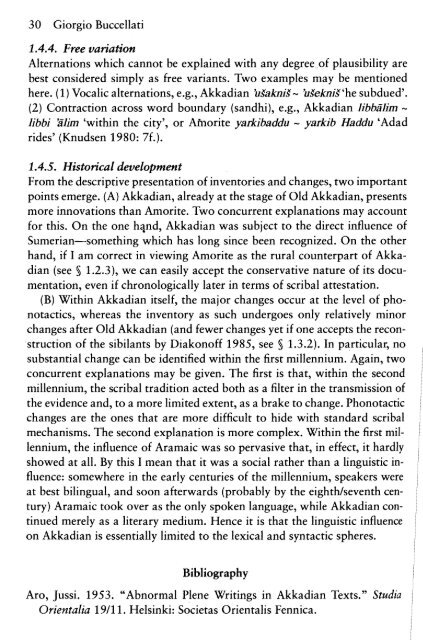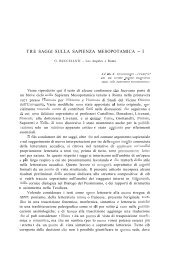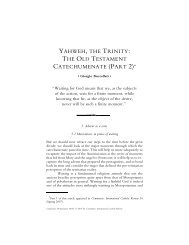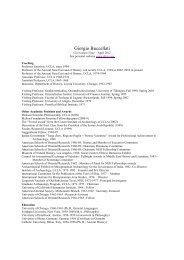Akkadian and Amorite Phonology
Akkadian and Amorite Phonology
Akkadian and Amorite Phonology
Create successful ePaper yourself
Turn your PDF publications into a flip-book with our unique Google optimized e-Paper software.
30 Giorgio Buccellati1.4.4. Free variationAlternations which cannot be explained with any degree of plausibility arebest considered simply as free variants. Two examples may be mentionedhere. (1) Vocalic alternations, e.g., <strong>Akkadian</strong> WakniS- WekniSLhe subdued'.(2) Contraction across word boundary (s<strong>and</strong>hi), e.g., <strong>Akkadian</strong> libbalim -Iibbi 5Zim 'within the city', or Ainorite yarkibaddu - yarkib Haddu 'Adadrides' (Knudsen 1980: 7f.).1.4.5. Historical developmentFrom the descriptive presentation of inventories <strong>and</strong> changes, two importantpoints emerge. (A) <strong>Akkadian</strong>, already at the stage of Old <strong>Akkadian</strong>, presentsmore innovations than <strong>Amorite</strong>. Two concurrent explanations may accountfor this. On the one hqnd, <strong>Akkadian</strong> was subject to the direct influence ofSumerian-something which has long since been recognized. On the otherh<strong>and</strong>, if I am correct in viewing <strong>Amorite</strong> as the rural counterpart of <strong>Akkadian</strong>(see $ 1.2.3), we can easily accept the conservative nature of its documentation,even if chronologically later in terms of scribal attestation.(B) Within <strong>Akkadian</strong> itself, the major changes occur at the level of phonotactics,whereas the inventory as such undergoes only relatively minorchanges after Old <strong>Akkadian</strong> (<strong>and</strong> fewer changes yet if one accepts the reconstructionof the sibilants by Diakonoff 1985, see $ 1.3.2). In particular, nosubstantial change can be identified within the first millennium. Again, twoconcurrent explanations may be given. The first is that, within the secondmillennium, the scribal tradition acted both as a filter in the transmission ofthe evidence <strong>and</strong>, to a more limited extent, as a brake to change. Phonotacticchanges are the ones that are more difficult to hide with st<strong>and</strong>ard scribalmechanisms. The second explanation is more complex. Within the first millennium,the influence of Aramaic was so pervasive that, in effect, it hardlyshowed at all. By this I mean that it was a social rather than a linguistic influence:somewhere in the early centuries of the millennium, speakers wereat best bilingual, <strong>and</strong> soon afterwards (probably by the eighthfseventh century)Aramaic took over as the only spoken language, while <strong>Akkadian</strong> continuedmerely as a literary medium. Hence it is that the linguistic influenceon <strong>Akkadian</strong> is essentially limited to the lexical <strong>and</strong> syntactic spheres.BibliographyAro, Jussi. 1953. "Abnormal Plene Writings in <strong>Akkadian</strong> Texts." StudiaOrientalia 1911 1. Helsinki: Societas Orientalis Fennica.I III







